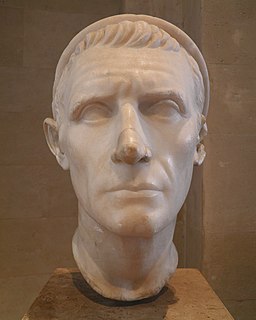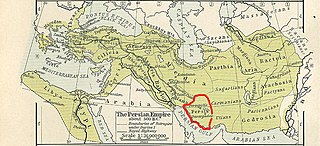Theodotus Hemiolius (in Greek Θεoδoτoς Hμιoλιoς) was a general in the service of king Antiochus III the Great (223–187 BC), who was sent by the king in 222 BC, together with Xenon, against Molon, satrap of Media, who had raised the standard of revolt in the eastern provinces of the Seleucid Empire. However, the two generals were unable to control the rebel satrap and withdrew within the walls of the cities, leaving him in possession of the open country. [1]

Greek is an independent branch of the Indo-European family of languages, native to Greece, Cyprus and other parts of the Eastern Mediterranean and the Black Sea. It has the longest documented history of any living Indo-European language, spanning more than 3000 years of written records. Its writing system has been the Greek alphabet for the major part of its history; other systems, such as Linear B and the Cypriot syllabary, were used previously. The alphabet arose from the Phoenician script and was in turn the basis of the Latin, Cyrillic, Armenian, Coptic, Gothic, and many other writing systems.

Antiochus III the Great was a Hellenistic Greek king and the 6th ruler of the Seleucid Empire. He ruled over the region of Syria and large parts of the rest of western Asia towards the end of the 3rd century BC. Rising to the throne at the age of eighteen in 222 BC, his early campaigns against the Ptolemaic Kingdom were unsuccessful, but in the following years Antiochus gained several military victories and substantially expanded the empire's territory. His traditional designation, the Great, reflects an epithet he assumed. He also assumed the title Basileus Megas, the traditional title of the Persian kings. A militarily active ruler, Antiochus restored much of the territory of the Seleucid Empire, before suffering a serious setback, towards the end of his reign, in his war against Rome.
Xenon was an officer in the service of Antiochus III the Great, who was sent, together with Theodotus Hemiolius, against Molon in 221 BC. They retired before Molon under the shelter of the towns.
After the later and final defeat of Molon by Antiochus, Theodotus was selected by that monarch to take the command in Coele-Syria, while Antiochus undertook to reduce Seleucia on the Tigris. What Theodotus accomplished is not known, but the next year (219 BC) he was serving under the immediate command of Antiochus and bearing an important share in the action against Nicolaus, one of the generals of Ptolemy IV Philopator (221–204 BC), near Porphyreon, as well as shortly after at the siege of Rabbatamana. On both these occasions he was associated with Nicarchus, with whom he also shared command of the phalanx during the Battle of Raphia, 217 BC. After that major defeat he was chosen by Antiochus as one of the ambassadors whom he sent to Ptolemy to sue for peace. [2]

Coele-Syria, Coele Syria, Coelesyria, also rendered as Coelosyria and Celesyria, otherwise Hollow Syria, was a region of Syria in classical antiquity. It probably derived from the Aramaic for all of the region of Syria but more often was applied to the Beqaa Valley between the Lebanon and Anti-Lebanon mountain ranges. The area now forms part of the modern nations of Lebanon and Syria.
Nicolaus was an Aetolian, and a general of Ptolemy IV Philopator, king of Egypt. In 219 BC he led a siege of Ptolemais, which was held by the traitor Theodotus, who had revolted from Ptolemy to Antiochus III the Great. Nicolaus, however, abandoned the siege on the approach of the Seleucid king. In the same year he did much towards baffling the attempt of Antiochus on Dora in Phoenicia, by sending constant succours to the besieged. In 218 BC he was invested by Ptolemy with the supreme command in Coele-Syria, an appointment fully warranted, according to Polybius, by his military experience and bravery. He was, however, dislodged by Antiochus and his generals from a strong position which he had taken up between the range of Mount Lebanon and the sea near the town of Porphyreon, and was obliged to seek safety in a precipitate flight towards Sidon. It may be conjectured that after this he deserted to Antiochus: at least, we find the name of Nicolaus of Aetolia mentioned among the generals of the Syrian king in his campaign in Hyrcania, 209 BC.
Porphyreon was a town in the late Roman province of Phoenice Prima, and a bishopric that was a suffragan of the metropolitan see of that province, Tyre. It corresponds to present-day Jieh, Lebanon.







